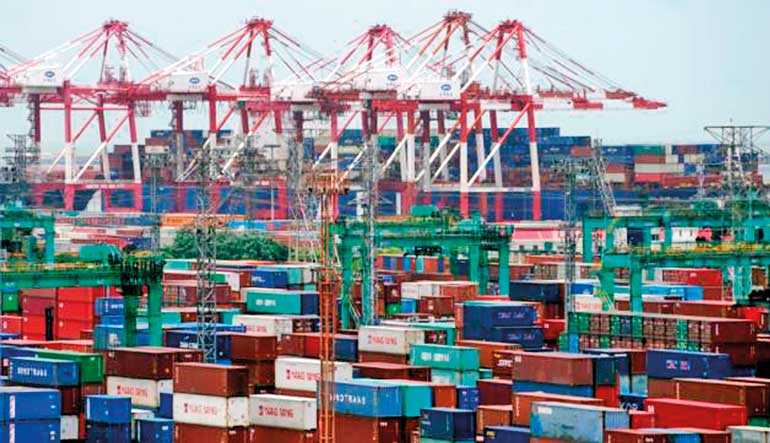Monday Dec 29, 2025
Monday Dec 29, 2025
Thursday, 17 January 2019 00:31 - - {{hitsCtrl.values.hits}}

BEIJING (Reuters): China on Tuesday signalled more stimulus measures in the near term as a tariff war with the United States took a heavy toll on its trade sector and raised the risk of a sharper economic slowdown.
The world’s second-largest economy will aim to achieve “a good start” in the first quarter, the National Development and Reform Commission (NDRC) said in a statement, indicating the government is ready to counter rising pressure on growth.
Surprising contractions in China’s December trade and factory activity have stirred speculation over whether Beijing needs to switch to more forceful stimulus measures, though most analysts believe the government will avoid doing so due to worries it could heighten debt risks and weaken the yuan.
“Further economic stimulus measures will be needed. The authorities seem to be taking their time to deliver this, perhaps chastened by the overkill of their stimulus in the financial crisis,” ING economists said in a note to client.
“The eventual package may be very substantial.”
Some analysts believe China could deliver 2 trillion yuan ($296.21 billion) worth of cuts in taxes and fees, and allow local governments to issue another 2 trillion yuan in special bonds largely used to fund key projects. Most, however, expect the fresh stimulus will take months to start feeding into the economy.
China’s growth slowed in 2018 as a years-long campaign to reduce a mountain of debt and a crackdown on riskier lending practices hurt domestic demand. As the trade war with the United States escalated last year and hit exports, global financial markets went into a tailspin on worries about a sharper China slowdown though many analysts believe an economic hard-landing is unlikely.
Premier Li Keqiang said China achieved its key 2018 economic targets, which were “hard-won”, and seeks a strong start to the economy in the first quarter to establish conditions helpful to meeting this year’s goals, according to state television on Monday.
Sources told Reuters last week that Beijing was planning to lower its growth target to 6-6.5% this year after an expected 6.6% in 2018, the slowest pace in 28 years.
The proposed target, to be unveiled at the annual parliamentary session in March, was endorsed by top leaders at the annual closed-door Central Economic Work Conference in mid-December, the sources told Reuters.
Annual growth of about 6.2% is needed this year and in 2020 to meet the ruling Communist Party’s longstanding goal of doubling gross domestic product and incomes in the decade to 2020, and to turn China into a “modestly prosperous” nation.
China has lowered the level of reserves that commercial banks need to set aside for the fifth time in a year, to spur lending, particularly to small and medium-sized firms. Beijing has also cut taxes and fees, and stepped up infrastructure investment to shore up the economy.This year, China will step up fiscal expenditure and implement larger tax and fee cuts. The cuts will focus on reducing burdens for small firms and manufacturers, the finance ministry said in a statement on Tuesday.
Stabilising employment is the government’s top priority, NDRC Vice Chairman Lian Weiliang said at a press conference on Tuesday, briefing reporters on the measures that are in the works following December’s economic work conference.
No flood of stimulus
China will speed up investment projects and local government bond issuance, but will not resort to “flood-like” stimulus, Lian said.
The central bank, in a separate statement issued at the press conference, said it will maintain prudent monetary policy with “appropriate tightness and looseness.” Monetary policy will be made more forward-looking, flexible and targeted, the People’s Bank of China (PBOC) said.
But a prudent monetary policy does not mean that there will be no changes, PBOC Deputy Governor Zhu Hexin said at the press conference.
Apart for cutting the reserve requirement ratios (RRRs) for commercial banks, the central bank has also increasingly turned to open market operations, in particular the medium-term lending facility, or MLF, to support liquidity.
Cutting benchmark interest rates may be the last resort as that could weigh on the yuan CNY=CFXS and fuel debt risks, analysts say.
When asked if the PBOC should cut benchmark rates, Zhu said existing monetary policy measures should be improved.
“Regarding the question of interest rate cuts, people are paying more attention to it. Our current monetary policy, including overall policy - RRR cuts and medium-term lending facility, helps us adapt to the overall economic environment and price levels,” Zhu said.
“Overall, monetary policy is gradually taking effect in the economy. We should look to improve our existing policies and make dynamic assessments on that basis,” he said. Chinese banks extended 16.17 trillion yuan ($2.40 trillion) in net new yuan loans last year, the PBOC said in its statement released at the press conference, blowing past the previous record of 13.53 trillion yuan in 2017.
In December, banks extended 1.083 trillion yuan in net new yuan loans, according to Reuters calculations based on previously released central bank data. That was more than market expectations of 800 billion yuan but down from 1.25 trillion yuan in November.
Despite the RRR cuts, China is confident about the yuan currency.
“Our exchange rate regime is a floating one based on market supply and demand. We have confidence on this aspect (considering) our economy and our foreign exchange reserves,” Zhu said.

China central bank injects record net $83 billion in open market operations